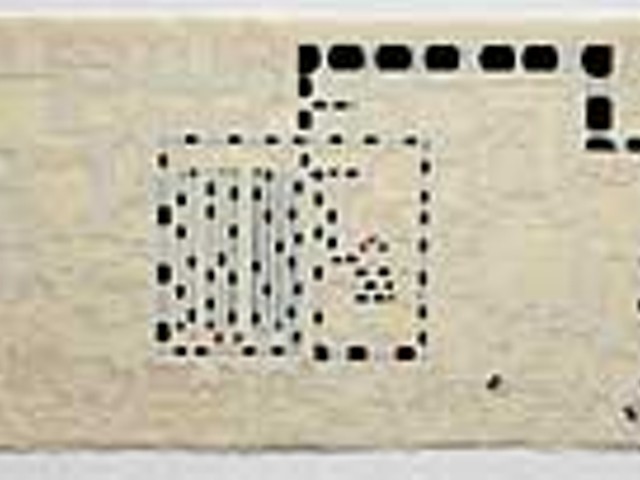The title of Robert Schefman’s painting, “Personal Baggage,” is a double entendre — a rather obvious one. The artist pictures himself in a suit and tie at an airport carousel, struggling to claim his luggage, a naked version of himself. But here’s what makes this picture fascinating (and so much fun to look at): his lush color choices. In the background, a man bends in a turquoise shirt to pick up a bright lavender suitcase. Another stranger is wearing a shirt with wide horizontal stripes of orange-red and yellow.
Schefman’s paintings tell great stories, like bizarre dreams. His admirers lust after meaning, and he’s usually happy to oblige. The painter, whose work is on display in a solo show at Meadow Brook Art Gallery, feigns a lack of interest in formal concerns. But his tight, classically constructed paintings prove otherwise. Although his investment in content and technique is admirable, it’s perhaps a better experience to lose ourselves in the untranslatable sensuous immediacy of images, as Susan Sontag suggested.
“Interpretation,” she wrote, merely “makes art manageable, comfortable.” Schefman’s work can also be enjoyed without knowing that he uses boats to represent “a vessel for the self.” His singularity lies in his belief in the contemporary viability of his reinterpretation of old and modern masters.
Schefman, a well-known painter and head of foundations at the College for Creative Studies, is a humanist artist not so concerned with innovation. But critically assessing a figurative painter in 2005 is fraught with danger from the anti-illustration forces massed against Norman Rockwell and Andrew Wyeth, as well as the principled avant-garde.
That said, Schefman must be commended for a thoughtfulness that constantly animates his surfaces, and for mining his background in modernist sculpture to craft spot-on compositions. While he often works in a surrealist style, his best work is reminiscent of the baroque. “Chiaroscuro,” for example, replicates the theatricality of that era: dramatic heightened contrasts between light and dark; subjects viewed from awkwardly intimate points of view, recalling Caravaggio, arranged around a table, provoking the viewer to join. The work’s buttery color, infused with Schefman’s signature glow, is warmed further by the representation of wine and physical contact, as well as his always highly sensuous depiction of flesh. His solid, human figures reveal Renaissance-quality drawing and modeling skills.
In “Gothic Dream,” Schefman nods to baroque artist Artemisia Gentileschi, suggesting the luscious way she used paint in shades of white, for bed sheets, to make associations to the body — sexuality, sickness, sloth — and the unconscious mind.
His “Spilled Milk,” which he’s described as a nightmare of immobility pasted purposely into a Jan Van Eyck painting, can only be superficially compared to Van Eyck. Schefman’s illusionistic details — the crumbling wall, the bread, the spilled milk, a feather — are not as accurately rendered in the fine, down-to-the-single-strand-of-hair detail characterizing the northern European painting style.
For that, we can be thankful. Schefman’s individuality lies not merely in making the old new, but in offering a completely novel reinterpretation.
The best paintings are those that don’t catch the artist trying too hard to tickle, shock or elucidate. In “Masquerade,” he is an expert choreographer. Here, the gazes of three couples go in all directions as do their bodies, but we cannot turn away. We witness love, anger, fatigue, boredom, drunkenness and resignation — a narrative on marriage and relationships.
It seems his stories draw us in after all.
Robert Schefman: A Retrospective of Painting, runs through Oct. 23, at Meadow Brook Art Gallery, 208 Wilson Hall, Oakland University campus, Rochester; 248-370-3005.
Christina Hill teaches art history at the College for Creative Studies and writes art and theater reviews for thedetroiter.com. Send comments to [email protected]




